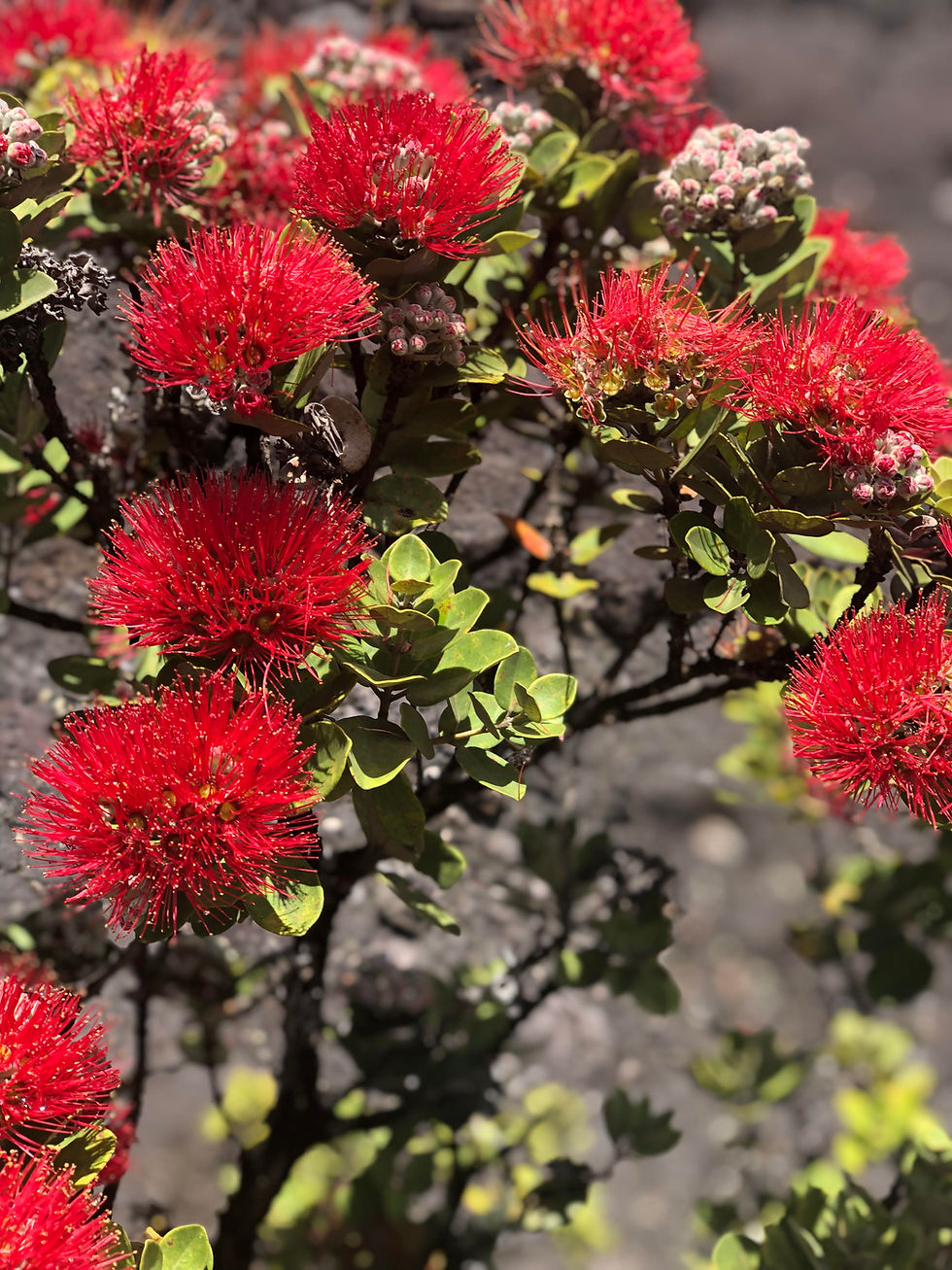

ʻŌhiʻa
ROD
Rapid ʻŌhiʻa Death

‘Ōhi‘a, the most abundant endemic tree in the Hawaiian Islands, are dying from a fungal disease referred to as “Rapid ‘Ōhi‘a Death" (ROD). Based on recent and ongoing aerial surveys in 2019, more than 175,000 acres of forest contain ʻōhiʻa showing symptoms of ROD disease on the Island of Hawaiʻi.

ROD has been found on Hawai‘i Island, Kaua‘i, Maui, and O‘ahu.
ROD is comprised of two pathogens, Ceratocystis lukuohia and Ceratocystis huliohia. The more aggressive species of fungus causing ROD, C. lukuohia, accounts for roughly 90% of detections on Hawaiʻi Island. The less aggressive species, though still fatal fungus Ceratocystis huliohia has also been detected on Maui and Oʻahu. Hundreds of thousands of ‘ōhi‘a have died from this fungus on Hawai‘i Island alone. (5)
How does ROD kill ʻŌhiʻa?

The fungus enters the tree through a wound.
A wound can be caused in many ways and might not be visible. Humans can wound trees by running over roots with a lawnmower, cutting through bark with a weed whacker, pruning, cutting into trees to mark trails, hiking over exposed roots, etc.
Strong winds, broken branches, included bark, and roots growing over lava rock can also cause wounds large enough to allow infection.
Once the fungus enters the tree it grows into the vascular system (sapwood) and stops water from moving up to the crown of the tree. (6)

If the 'Ōhi'a were not here...

Without the roots and fuzzy leaves
of the ‘ōhi‘a to capture water, what
will happen to our natural water sheds?

At the 2016 Merrie Monarch Festival, for the first time in its history, many hula halau opted to forgo traditional lei and adornments from the ohia lehua tree in order to stem the spread of ROD.
What other implications would there be on our way of life if we lost the ʻŌhiʻa?


